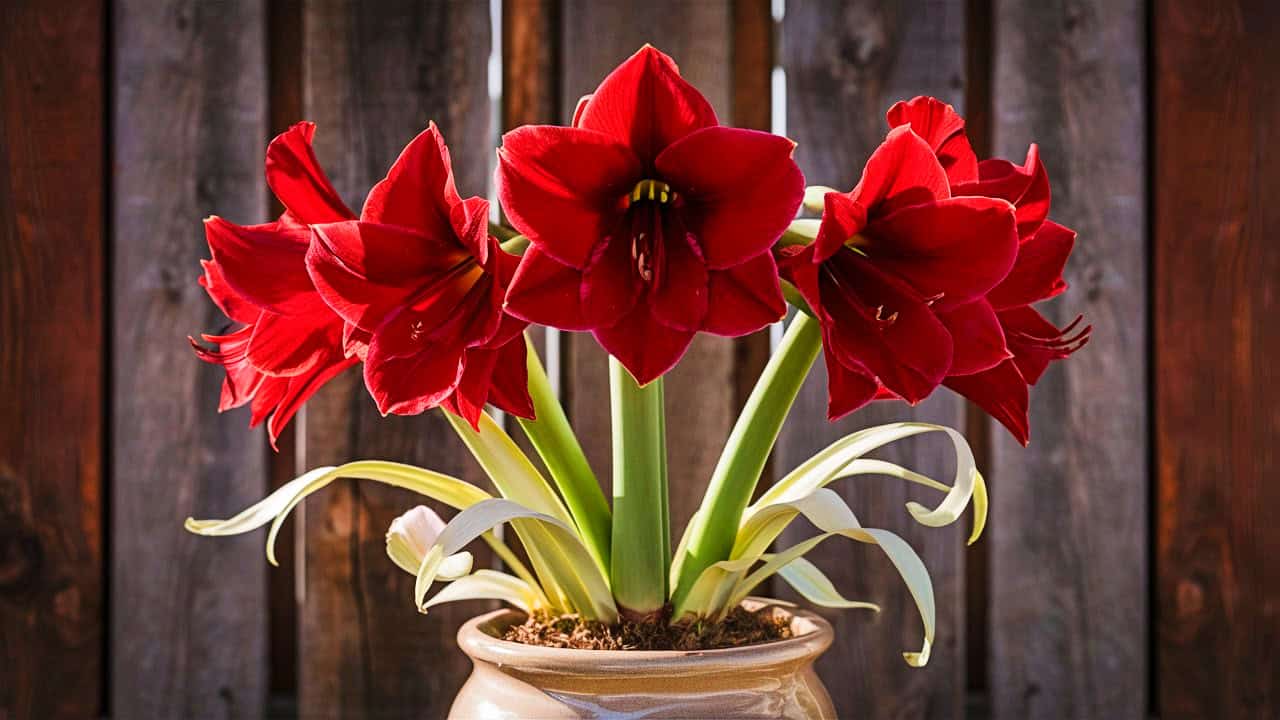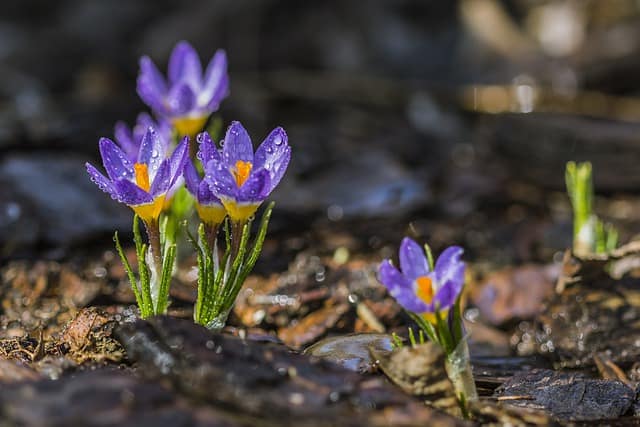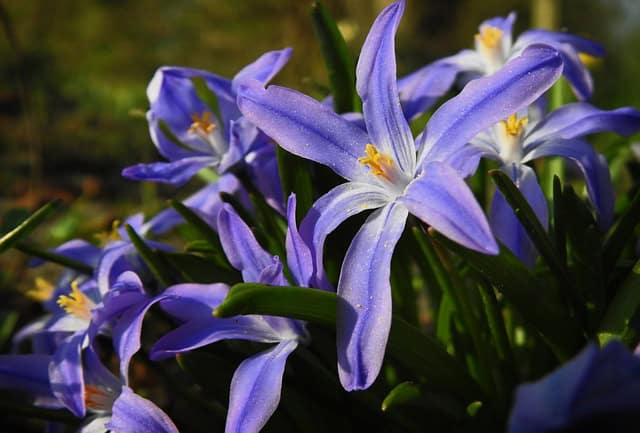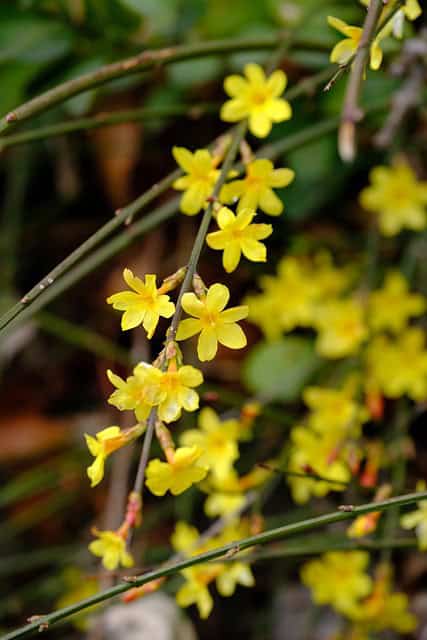Keep reading to discover a treasure trove of winter garden flowers, each with their own fascinating characteristics, growing requirements, and cultural significance.
Amaryllis

Amaryllis are a stunning addition to any winter garden, with their large, vibrant blooms that can reach up to 12 inches in diameter. These tropical bulbs thrive in cool temperatures, making them a perfect choice for gardeners looking to add a pop of color to their outdoor spaces during the colder months. Amaryllis come in a variety of colors, including red, white, pink, and even striped or bi-colored varieties, allowing you to create a truly unique and eye-catching display. One of the best things about amaryllis is their ease of care – simply plant the bulb in well-draining soil and provide it with plenty of sunlight, and you’ll be rewarded with a stunning floral display that can last for several weeks.
Calendula

Calendula, also known as the “pot marigold,” is a cheerful and versatile winter flower that can thrive in a variety of growing conditions. These hardy annuals are known for their bright, daisy-like blooms that come in shades of yellow, orange, and even red. Calendula not only adds a pop of color to the winter garden, but it also has a range of practical uses, from being used as a natural dye to having medicinal properties that can be used in salves and tinctures. Calendula is also a great companion plant, as it can help to repel pests and attract beneficial insects to your garden. With their easy-to-grow nature and long-lasting blooms, calendula are a must-have for any winter gardener.
Camellia

Camellias are a beloved winter-flowering shrub that add a touch of elegance and sophistication to any garden. These evergreen plants are known for their glossy, dark green foliage and their stunning, rose-like blooms that come in a range of colors, including white, pink, red, and even variegated varieties. Camellias are particularly well-suited to cooler climates, as they thrive in partial shade and can tolerate temperatures as low as 20°F. One of the most impressive things about camellias is their long flowering season, which can last from late fall through early spring, providing a reliable source of color and interest in the winter garden. Whether you choose to grow them in containers or as part of a larger landscape, camellias are a must-have for any gardener looking to add a touch of beauty and sophistication to their winter garden.
Christmas Cactus

The Christmas cactus is a unique and captivating addition to any winter garden. Unlike its name suggests, this succulent plant is not actually a cactus, but rather a type of epiphytic plant that is native to the tropical forests of Brazil. What makes the Christmas cactus so special is its ability to produce a stunning display of vibrant, tubular flowers in shades of red, pink, or white during the holiday season. These flowers can last for several weeks, providing a welcome burst of color and cheer during the often-dreary winter months. Christmas cacti are relatively easy to care for, as they thrive in partial shade and well-draining soil. With their trailing, cascading growth habit, they make a beautiful addition to hanging baskets or as a centerpiece in a winter container garden.
Crocus

Crocus are one of the earliest harbingers of spring, but these delicate flowers can also be a welcome sight in the winter garden. These diminutive bulbs are known for their cup-shaped blooms that emerge from the ground, often before the snow has even melted. Crocuses come in a range of vibrant colors, including purple, yellow, white, and even striped varieties, making them a versatile choice for adding pops of color to your winter landscape. What’s particularly unique about crocuses is their ability to bloom even in the face of adversity – these hardy plants can push through frozen soil and even light snow to display their cheerful flowers. Whether planted in sweeping drifts or tucked into rock gardens, crocuses are a must-have for any winter gardener looking to add early-blooming charm to their outdoor space.
Cyclamen

Cyclamen are a true winter wonder, with their delicate, butterfly-like flowers that bloom in a stunning array of colors, including pink, white, purple, and red. These tuberous perennials are native to the Mediterranean region, and they thrive in cool, shady environments, making them a perfect choice for the winter garden. One of the most unique features of cyclamen is their intricate, marbled foliage, which can add an extra layer of visual interest to your outdoor space. Cyclamen are also known for their long-lasting blooms, which can persist for several months, providing a reliable source of color and beauty throughout the winter season. Whether you choose to grow them in containers or as part of a larger planting scheme, cyclamen are a must-have for any gardener looking to add a touch of elegance and sophistication to their winter garden.
Daffodil

Daffodils are a quintessential spring flower, but did you know that there are also varieties that bloom in the winter? These cheerful, trumpet-shaped flowers are a true delight in the winter garden, providing a burst of sunny color when the landscape is often drab and dreary. One of the most unique things about winter-blooming daffodils is their ability to thrive in colder temperatures, with some varieties even tolerating light frost and snow. These hardy bulbs come in a range of sizes, from the diminutive ‘Tete-a-Tete’ to the regal ‘King Alfred,’ allowing gardeners to create a stunning display that can last for weeks. Whether planted in sweeping drifts or as accents in a mixed border, winter-blooming daffodils are a must-have for any gardener looking to add a touch of sunshine to their outdoor space during the colder months.
Daphne

Daphne is a delightful and fragrant addition to any winter garden, with its clusters of delicate, bell-shaped flowers that bloom in shades of pink, white, or purple. These evergreen shrubs are known for their intoxicating scent, which can often be detected from several feet away, making them a true delight for the senses. What’s particularly unique about daphne is its ability to thrive in partial shade, making it an ideal choice for gardeners with limited sunlight. These plants are also relatively compact, with a tidy, mounding habit that makes them well-suited for planting in containers or as part of a mixed border. Whether you choose to grow a classic ‘Odora’ variety or a more modern cultivar like ‘Carol Mackie,’ daphne is a must-have for any winter gardener looking to add a touch of fragrance and beauty to their outdoor space.
Distylium

Distylium, also known as the “Isu” plant, is a unique and underutilized winter-flowering shrub that deserves more attention in the gardening world. These evergreen plants are native to Asia and are known for their delicate, urn-shaped flowers that bloom in shades of red, purple, or white during the winter months. What makes distylium so special is its ability to thrive in a wide range of growing conditions, from full sun to partial shade, and its tolerance for both heat and cold. These plants also have a compact, mounding habit that makes them well-suited for use as groundcovers, hedges, or even as specimen plants in a winter garden. With their year-round foliage and winter blooms, distylium are a true four-season wonder that can add both beauty and structure to any outdoor space.
Dutchman’s Breeches

Dutchman’s breeches are a delightful and whimsical addition to the winter garden, with their unique, pantaloon-shaped flowers that dangle gracefully from slender stems. These woodland-dwelling perennials are native to North America and are known for their ability to thrive in shady, moist environments – making them an ideal choice for gardeners with limited sunlight. What’s particularly fascinating about dutchman’s breeches is their intricate, two-part flowers, which resemble a pair of inverted, white trousers with a touch of yellow at the “waistband.” These blooms emerge in early spring, often before the surrounding foliage has fully unfurled, creating a captivating display that can last for several weeks. Whether planted in a naturalistic setting or as part of a mixed border, dutchman’s breeches are a must-have for any gardener looking to add a touch of enchantment to their winter landscape.
Glory of the Snow

Glory of the snow, or Chionodoxa, is a delightful and diminutive bulb that adds a touch of whimsy to the winter garden. These small, star-shaped flowers emerge in early spring, often pushing through the last remnants of snow to create a stunning display of blue, white, or pink blooms. What makes glory of the snow so unique is its ability to naturalize and spread, forming dense carpets of color that can cover the ground in a matter of years. These hardy bulbs are also incredibly easy to grow, thriving in a wide range of soil types and requiring minimal care once established. Whether planted in sweeping drifts or as accents in a rock garden, glory of the snow is a must-have for any gardener looking to add a touch of early-blooming magic to their winter landscape.
Hellebore

Hellebores, also known as the “winter rose,” are a true standout in the winter garden, with their large, cup-shaped flowers that bloom in a stunning array of colors, including white, pink, purple, and even green. These evergreen perennials are native to Europe and Asia, and they are known for their ability to thrive in partial shade and cool temperatures. What makes hellebores so unique is their long flowering season, which can last from late winter through early spring, providing a reliable source of color and interest when the rest of the garden is still dormant. These plants also have a unique, nodding growth habit that adds an elegant, almost mystical quality to the winter landscape. Whether planted in a woodland setting or as part of a mixed border, hellebores are a must-have for any gardener looking to add a touch of sophistication and beauty to their winter garden.
Lenten Rose

The Lenten rose, or Helleborus orientalis, is a true winter wonder, with its large, cup-shaped flowers that bloom in a stunning array of colors, including white, pink, purple, and even green. These evergreen perennials are native to Europe and Asia, and they are known for their ability to thrive in partial shade and cool temperatures. What makes the Lenten rose so unique is its long flowering season, which can last from late winter through early spring, providing a reliable source of color and interest when the rest of the garden is still dormant. These plants also have a unique, nodding growth habit that adds an elegant, almost mystical quality to the winter landscape. One of the most fascinating aspects of the Lenten rose is its ability to self-seed, allowing gardeners to enjoy a natural, ever-expanding display of these captivating flowers year after year. Whether planted in a woodland setting or as part of a mixed border, the Lenten rose is a must-have for any gardener looking to add a touch of sophistication and beauty to their winter garden.
Mahonia

Mahonia, also known as the Oregon grape, is a unique and versatile shrub that adds both color and structure to the winter garden. These evergreen plants are native to North America and are known for their striking, holly-like foliage that takes on a rich, burgundy hue during the colder months. But what truly sets mahonia apart is its stunning display of bright yellow, fragrant flowers that bloom in late winter or early spring, often before the surrounding plants have even begun to stir. These flowers are a true delight for the senses, attracting a variety of pollinators and providing a much-needed source of nectar during the lean winter season. Mahonia is also incredibly hardy, thriving in a wide range of soil types and growing conditions, making it an ideal choice for gardeners looking to add a touch of year-round interest to their outdoor space.
Mediterranean White Heather

Mediterranean white heather, or Erica carnea, is a delightful and versatile shrub that adds a touch of winter magic to any garden. These low-growing, evergreen plants are native to the Mediterranean region and are known for their delicate, bell-shaped flowers that bloom in shades of white, pink, or purple during the winter months. What makes Mediterranean white heather so unique is its ability to thrive in a wide range of growing conditions, from full sun to partial shade, and its tolerance for poor, well-drained soils. These plants also have a compact, mounding habit that makes them well-suited for use as groundcovers, edging plants, or even as part of a mixed border. Whether planted in sweeping drifts or as accents in a rock garden, Mediterranean white heather is a must-have for any gardener looking to add a touch of winter charm to their outdoor space.
Ornamental Cabbage and Kale

While not technically flowers, ornamental cabbage and kale are a must-have for any winter garden, adding a stunning pop of color and texture to the landscape. These cool-weather annuals come in a wide range of vibrant hues, from deep purple and burgundy to bright pink and white, and their large, ruffled leaves create a captivating visual contrast against the often-drab winter backdrop. What makes ornamental cabbage and kale so unique is their ability to thrive in cold temperatures, with some varieties even tolerating light frost and snow. These plants are also incredibly versatile, working equally well as standalone specimens, in mixed borders, or even in containers. Whether you choose to grow the classic ‘Redbor’ kale or the more modern ‘Osaka White’ cabbage, these winter wonders are sure to add a touch of drama and elegance to your outdoor space.
Pansies

Pansies are a classic winter garden flower, with their cheerful, smiling faces and vibrant color palette that can brighten even the gloomiest of days. These cool-weather annuals are known for their ability to bloom throughout the winter months, providing a reliable source of color and interest when many other plants have gone dormant. What makes pansies so unique is their wide range of cultivars, which come in a stunning array of hues, including solid colors, bicolors, and even patterns. These flowers also have a delightful, velvety texture that adds an extra layer of visual interest to the winter garden. Whether planted in sweeping drifts or as accents in a mixed border, pansies are a must-have for any gardener looking to inject a burst of life and personality into their outdoor space during the colder months.
Pieris

Pieris, also known as the “lily-of-the-valley shrub,” is a captivating and unique addition to the winter garden. These evergreen shrubs are native to Asia and are known for their striking, pendulous clusters of bell-shaped flowers that bloom in shades of white, pink, or red during the late winter and early spring months. What makes pieris so special is its ability to thrive in partial shade, making it an ideal choice for gardeners with limited sunlight. These plants also have a compact, mounding habit that makes them well-suited for use as foundation plantings, hedges, or even as specimen plants in a mixed border. One of the most fascinating aspects of pieris is its foliage, which emerges in shades of red or bronze before maturing to a rich, glossy green. Whether you choose to grow the classic ‘Japonica’ variety or the more modern ‘Mountain Fire,’ pieris is a must-have for any winter gardener looking to add a touch of elegance and drama to their outdoor space.
Poinsettia

While not typically thought of as a winter garden flower, the iconic poinsettia deserves a place in this list for its ability to add a touch of vibrant color and festive cheer to the colder months. These tropical plants, native to Mexico, are known for their striking, brightly colored “flowers” (which are actually modified leaves called bracts) that bloom in shades of red, pink, white, and even purple. What makes poinsettias so unique is their association with the holiday season, making them a popular choice for indoor displays and outdoor planters during the winter months. But these plants are more than just a seasonal decoration – they can also thrive outdoors in mild climates, where they can grow into large, shrub-like specimens that add a touch of tropical flair to the winter garden. Whether used as a focal point or incorporated into a mixed planting, poinsettias are a must-have for any gardener looking to inject a burst of festive color into their outdoor space.
Primrose

Primrose, or Primula, is a delightful and versatile winter garden flower that adds a touch of whimsy and charm to the landscape. These perennials are known for their clusters of brightly colored, cup-shaped blooms that emerge in a wide range of hues, including yellow, pink, purple, and even red. What makes primrose so unique is its ability to thrive in cool, moist conditions, making it an ideal choice for gardeners with shady, damp areas. These plants also have a compact, mounding habit that makes them well-suited for use as edging plants, in rock gardens, or as part of a mixed border. O
Scilla

Scilla, also known as the “Siberian squill,” is a delightful and diminutive bulb that adds a burst of vibrant blue to the winter garden. These small, star-shaped flowers emerge in early spring, often pushing through the last remnants of snow to create a stunning display that can carpet the ground in a sea of azure hues. What makes scilla so unique is its ability to naturalize and spread, forming dense, self-sowing colonies that return year after year with minimal effort from the gardener. These hardy bulbs are also incredibly easy to grow, thriving in a wide range of soil types and requiring little maintenance once established. Whether planted in sweeping drifts or as accents in a rock garden, scilla is a must-have for any winter gardener looking to add a touch of early-blooming magic to their outdoor space.
Siberian Scilla

Siberian scilla, or Scilla siberica, is a delightful and diminutive bulb that adds a burst of vibrant blue to the winter garden. These small, star-shaped flowers emerge in early spring, often pushing through the last remnants of snow to create a stunning display that can carpet the ground in a sea of azure hues. What makes Siberian scilla so unique is its ability to naturalize and spread, forming dense, self-sowing colonies that return year after year with minimal effort from the gardener. These hardy bulbs are also incredibly easy to grow, thriving in a wide range of soil types and requiring little maintenance once established.
Snowdrops

Snowdrops, or Galanthus, are a true harbinger of spring, with their delicate, nodding white flowers that emerge from the frozen ground as early as late winter. What makes snowdrops so unique is their ability to thrive in the coldest of conditions, often blooming while the surrounding landscape is still blanketed in snow. These diminutive bulbs are known for their graceful, bell-shaped flowers that hang from slender stems, creating a captivating display that can brighten even the gloomiest of winter days.
Spring Starflower

Spring starflower, or Ipheion uniflorum, is a delightful and versatile bulb that adds a touch of whimsy to the winter garden. These small, star-shaped flowers emerge in early spring, often alongside other early-blooming bulbs like snowdrops and crocuses, creating a harmonious and visually stunning display. What makes spring starflower so unique is its ability to thrive in a wide range of growing conditions, from full sun to partial shade, and its tolerance for poor, well-drained soils. These plants also have a compact, mounding habit that makes them well-suited for use as edging plants, in rock gardens, or as part of a mixed border.
Winter Aconite

Winter aconite, or Eranthis hyemalis, is a delightful and resilient bulb that adds a burst of sunshine to the winter garden. These cheerful, cup-shaped flowers emerge in late winter, often poking through the last remnants of snow to create a stunning display of golden-yellow blooms. What makes winter aconite so unique is its ability to thrive in the coldest of conditions, with some varieties even tolerating light frost and snow. These hardy bulbs are also known for their ability to naturalize and spread, forming dense, carpet-like colonies that return year after year with minimal effort from the gardener.
Winter Heath

Winter heath, or Erica carnea, is a captivating and versatile evergreen shrub that adds a pop of color and texture to the winter garden. These low-growing plants are known for their delicate, bell-shaped flowers that bloom in shades of pink, purple, and white, often during the coldest months of the year. What makes winter heath so unique is its ability to thrive in a wide range of growing conditions, from full sun to partial shade, and its tolerance for poor, well-drained soils. These plants also have a compact, mounding habit that makes them well-suited for use as ground covers, edging plants, or even as accents in a mixed border.
Winter Jasmine

Winter jasmine, or Jasminum nudiflorum, is a delightful and fragrant vine that adds a touch of warmth and charm to the winter garden. These hardy, deciduous plants are known for their bright yellow, star-shaped flowers that bloom along the bare stems, often as early as late winter or early spring. What makes winter jasmine so unique is its ability to thrive in a wide range of growing conditions, from full sun to partial shade, and its tolerance for poor, well-drained soils. These plants also have a trailing, cascading habit that makes them well-suited for use as ground covers, on trellises, or even as accents in a mixed border.
Winterberry

Winterberry, or Ilex verticillata, is a captivating and versatile deciduous holly that adds a pop of vibrant color to the winter garden. These native North American shrubs are known for their striking red berries that persist long after the leaves have fallen, creating a stunning display that can brighten even the gloomiest of winter days.
What makes winterberry so unique is its ability to thrive in a wide range of growing conditions, from full sun to partial shade, and its tolerance for moist, acidic soils. These plants also have a naturally upright, multi-stemmed habit that makes them well-suited for use as specimen plants, in mixed borders, or even as informal hedges.
One of the most fascinating aspects of winterberry is its importance to wildlife, as its berries provide a valuable food source for birds and other small animals during the lean winter months. Whether planted as a standalone specimen or incorporated into a larger planting scheme, winterberry is a must-have for any gardener looking to add a touch of winter interest and wildlife-friendly charm to their outdoor space.
Witch Hazel

Witch hazel, or Hamamelis, is a captivating and fragrant shrub that adds a touch of magic to the winter garden. These deciduous plants are known for their delicate, spidery flowers that bloom in shades of yellow, orange, and red, often as early as late winter or early spring.
What makes witch hazel so unique is its ability to thrive in a wide range of growing conditions, from full sun to partial shade, and its tolerance for poor, well-drained soils. These plants also have a naturally multi-stemmed, spreading habit that makes them well-suited for use as specimen plants, in mixed borders, or even as informal hedges.
One of the most fascinating aspects of witch hazel is its long history of medicinal and practical uses, with its leaves and bark having been used for centuries to treat a variety of ailments, from skin irritations to muscle aches. Whether planted as a standalone specimen or incorporated into a larger planting scheme, witch hazel is a must-have for any gardener looking to add a touch of early-blooming magic and fragrance to their outdoor space.





